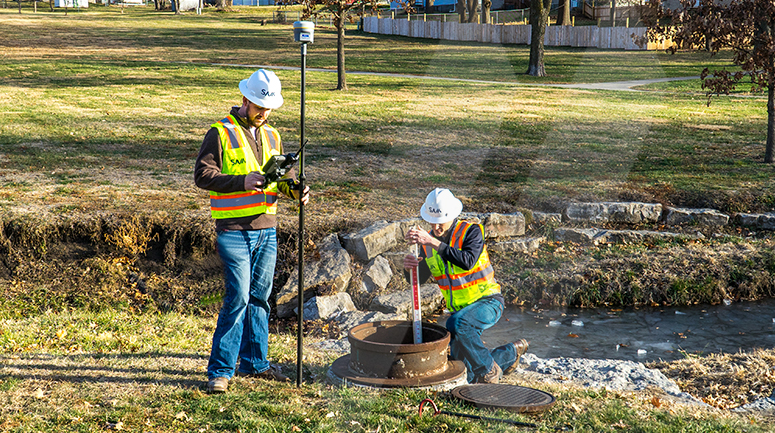Using Federal ARPA Funds to Support Municipality’s Utility Infrastructure
| Kirk Larson

Municipalities often benefit from revolving funds through no-interest loans and matching grants to help pay toward asset management projects on utility infrastructure. The issue with these mechanisms is the required match or repaying the loan. A unique opportunity came last year when funds were released at the federal level for local government to finance infrastructure projects without the need to repay or match any funds locally.
In March 2021, Congress authorized $65.1 billion in funding to state and local governments through the American Rescue Plan Act (ARPA) to support communities impacted by COVID-19. Governments have until December 31, 2024, to spend or allocate the money toward eligible projects. The Treasury Department provided guidelines for using the funds, including investments in water, sewer, or broadband infrastructure.
What makes ARPA separate from other state or federal funding options is the fund allocation and the requirements tied to the funds. While low-interest loans and matching grants are available annually for the purposes of infrastructure improvements, they require repayment or matching funds, which isn’t always an available resource when municipalities are operating under shoestring budgets. The only requirement for the ARPA money is that the funded project must fall within one of five categories:
- supporting public health expenditures
- addressing negative economic impacts
- replacing lost public sector revenue
- providing premium pay for essential workers
- investments in water, sewer, and broadband infrastructure
Having worked with and for municipalities for decades, and in my current positions as both SAM’s Local Government Market Lead and mayor of a small city in Missouri, I have seen firsthand how communities have benefited from the ARPA funds. In my experience with municipalities across the country, regulation compliance projects like infrastructure mapping couldn’t be done without the use of funding mechanisms. For my community, the ARPA funds were a once-in-a-generation opportunity. My city’s governing body has used these funds to improve the city’s utility infrastructure to support state and federal regulatory compliance. Other uses to benefit utility infrastructure can include mapping systems, inspections, water studies, MS4 systems – all of which have long-term benefits to maintaining utility networks.
The National League of Cities explains that municipalities should identify the drinking water, wastewater, or stormwater infrastructure investments that are of the highest priority for their own communities and know that eligibility is flexible for these projects as long as it relates to the overall category of “investing in water, sewer, and broadband infrastructure.”
For municipalities considering how to best utilize ARPA funds, one excellent option is investing in a geographic information system (GIS) to track utility assets and network inspections and ensure compliance with state and federal regulations. A GIS also enables municipalities with asset management capabilities that support project budgeting and infrastructure repair or replacement schedules. A GIS is an ever-evolving mechanism that can grow and develop alongside a community while easily transferring knowledge to avoid staff attrition.
Infrastructure projects can vary based on factors such as the city’s existing utility asset management capabilities or any long-term utility network goals established through needs assessments or community plan documents. State regulations can also influence how a municipality should invest in its utility networks.
If your municipality is unsure how to get started, reaching out to a professional firm for support is a good way to ensure your community gets the most out of the opportunity these funds represent.
SAM has supported hundreds of municipalities with infrastructure projects. Our experts can provide a comprehensive guide of how governments can move toward an asset management tool that can provide long-term support. To learn more about how SAM can help you utilize ARPA funds to support your city, contact our local government experts.
Kirk Larson
Kirk Larson joined SAM in 2020 and has over 27 years of experience in the GIS and surveying industries. As Director of GIS Operations, Kirk oversees the business development and operations, focusing in GPS and GIS services for utility and infrastructure projects.
View Profile
